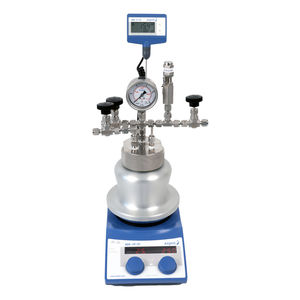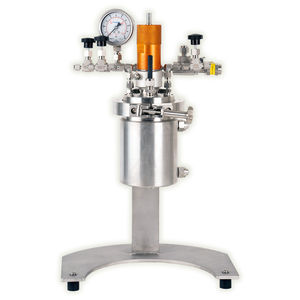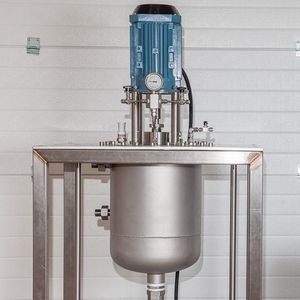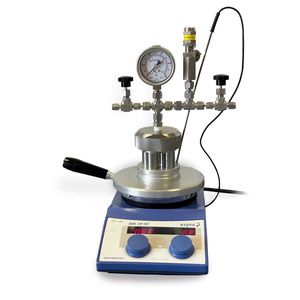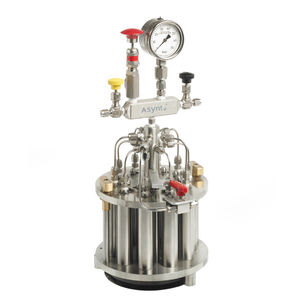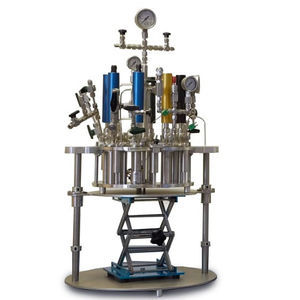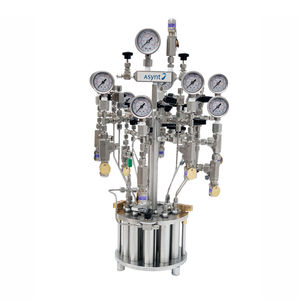
Laboratory reactor PressureSyncompactheatingpressure

Add to favorites
Compare this product
fo_shop_gate_exact_title
Characteristics
- Applications
- laboratory
- Configuration
- compact
- Temperature
- heating
- Treatment type
- pressure
Description
PressureSyn – High Safety Reactor: Asynt has collaborated with The University of Nottingham to bring their expertise & respect for the safety aspects of working at high pressure in the laboratory to the general market in the form of PressureSyn; an accessible benchtop scale high pressure reactor, with novel safety features built-in.
Why is PressureSyn so unique?
With a vessel volume of 125 mL, maximum working pressure of 200 bar and temperature of 200 °C with heating via any hotplate & stirring via magnetic flea, what’s significant about PressureSyn is the unique safety key & locking clamp mechanism that does not allow the vessel cover to be removed whilst any pressure remains in the system. Every safety key & clamp are unique therefore ensuring that it cannot be undone with a spare, and include features which automatically release any residual pressure prior to removing the cover.
This high-safety single laboratory pressure reactor also features a double pressure relief system with a pressure relief valve and optional bursting disk. Users are encouraged to regularly submit their bursting disk for testing to ensure safe operation so you’re welcome to purchase a spare to keep working whilst this is carried out.
New – Optional overhead stirring configuration
Users may choose the optional fittings to enable stirring via an overhead stirring motor as an alternative to the magnetic flea.
VIDEO
Catalogs
No catalogs are available for this product.
See all of Asynt‘s catalogsRelated Searches
- Laboratory fume extractor
- Heating furnace
- Laboratory furnace
- 1-door furnace
- Laboratory gas generator
- Benchtop hood
- Stainless steel hood
- Pressure swing adsorption gas generator
- HEPA fume extractor
- Vacuum furnace
- Glove box
- Containment fume hood
- Laboratory glove box
- Reactor
- Activated carbon fume extractor
- Laboratory reactor
- Compact furnace
- Stackable gas generator
- Floor-standing glove box
- Laboratory filtration system
*Prices are pre-tax. They exclude delivery charges and customs duties and do not include additional charges for installation or activation options. Prices are indicative only and may vary by country, with changes to the cost of raw materials and exchange rates.


